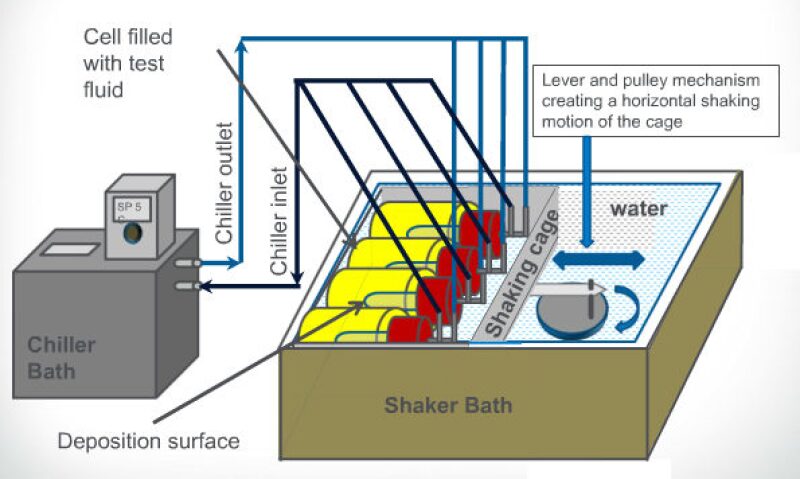Paraffin deposition can be a source of serious fouling and plugging issues in flowlines and other oilfield production equipment. While various chemical solutions exist to mitigate deposition risk, these products can be affected by the presence of brine in production fluids upstream of the separator. Because of this, and because of field experience suggesting that water cut has an impact on chemical performance, an expert argued that there is a need for a throughput laboratory test method that can screen paraffin product performance in the presence of brine.
In a presentation hosted by the SPE Flow Assurance Technical Section, Saugata Gon discussed the development of a new test method to screen paraffin chemistries, the Dynamic Paraffin Deposition Cell (DPDC). Gon is a principal chemist in the upstream energy services division at NALCO Champion.
Chemical mitigation and remediation for paraffin deposition relies on paraffin inhibitors and dispersants. Today, the most commonly used high throughput paraffin inhibitor screening tool is the cold finger method, where a magnetic stirrer agitates a solution at the bottom of a 100-mL bottle. Gon said this method has several limitations, namely that it does not screen product effectively due to a lack of thorough mixing in the system. If also cannot maintain a consistent level of shear throughout the test, nor can it generate high shear.
These limitations led the flow assurance group to examine the possibility of a tool that closer resembled real paraffin deposition in a dynamic condition. Gon said this tool needed to be able to differentiate between various chemistries and screen the right product so that it could perform in the field, among other things.
“We asked ourselves can we have a system that has a high throughput screening of produces in the presence of time,” he said. “That system should generate high shear. It should be coming closer to field conditions compared to a cold-finger setup, and it should use a limited amount of oil.”
Fig. 1 is a general schematic for the DPDC. Cells filled with test fluid are inserted into a shaker cage, along with a cold finger connected to a chiller bath. The cage is loaded onto a horizontal shaker inside of a shaker bath, and a lever and pulley mechanism inside the shaker bath create a horizontal shaking motion of the cage. Gon said the setup allows for a similar type of agitation for each cell regardless of the number of cells inserted into the shaker bath.

The goal with the setup was to achieve an emulsion where the water phase could be dispered into the oil phase, triggering the cold deposition cycle so that paraffins could then deposit onto the cold finger itself. The research team understood there would be agitation imparted in a stagnant cell, and that this agitation would provide good mixing between the oil and water phase. In addition, the horizontal shaking should be able to generate high shear inside the cell, making product screening in an oil/water system feasible.
In a field line, Gon said the flow pattern may change due to variations in production rate, and that there could be high shear in the pipeline as well as multiphase flow upstream of the separator. For this particular test method, NALCO Champion did not include a gas phase, limiting the scope to oil and water.
The flow assurance team tested the DPDC above and below wax appearance temperature (WAT). In both instances, it conditioned the oil at 60ºC. Above WAT, the chemical is injected and reconditioned at 60ºC for 30 minutes before brine is injected into the cell. The cold finger assembly is inserted and the cell setup is placed inside the shaker bath and agitated for another 30 minutes before initiation of the deposition cycle. Below WAT, the chemical is injected after the injection of brine into the cell and the insertion of the finger assemble and cell setup in the shaker bath. As the test fluid reaches a target temperature, the chemical is injected and agitated for 15 minutes before mixing.
Gon said the DPDC deposits showed an increase in wax content compared to conventional cold finger above and below WAT. Below WAT, a DPDC run including 16% brine showed better performance of products and performance differentiation than cold finger. An additional benefit of the DPDC experiment was that the water fouling tendency of the paraffin product could be tested.
Gon said a provisional patent application has been filed for the DPDC.
This webinar is available at https://webevents.spe.org/products/dynamic-paraffin-deposition-cell-a-novel-test-method-to-screen-paraffin-chemistries-under-multiphase-conditions#tab-product_tab_speaker_s

